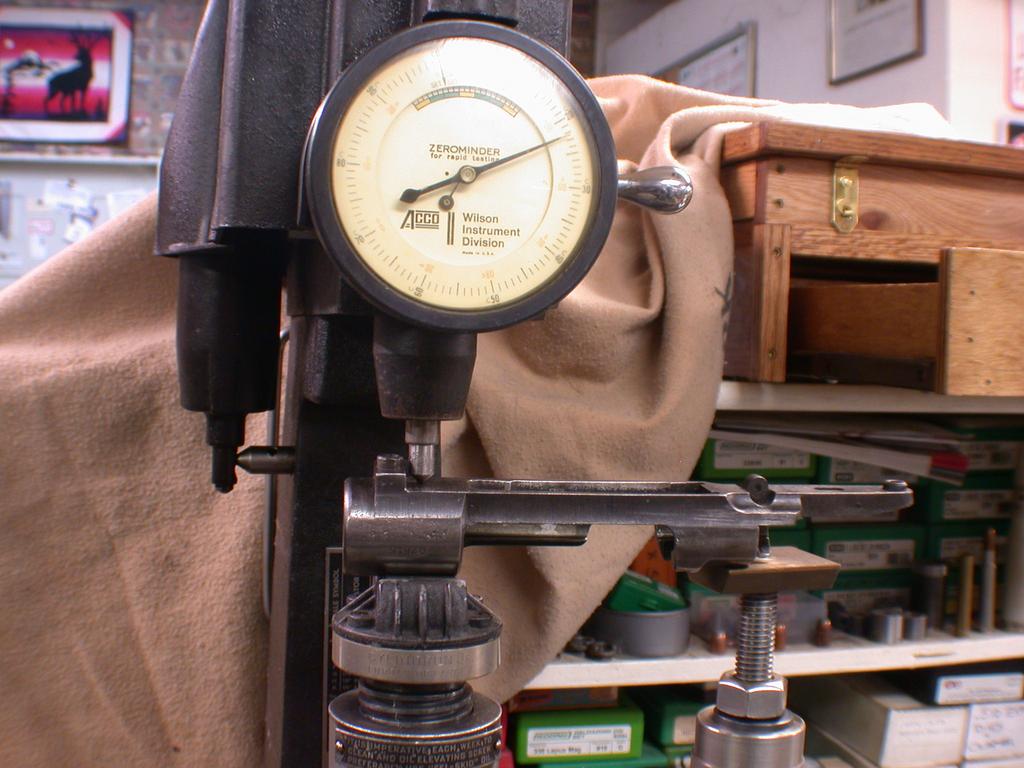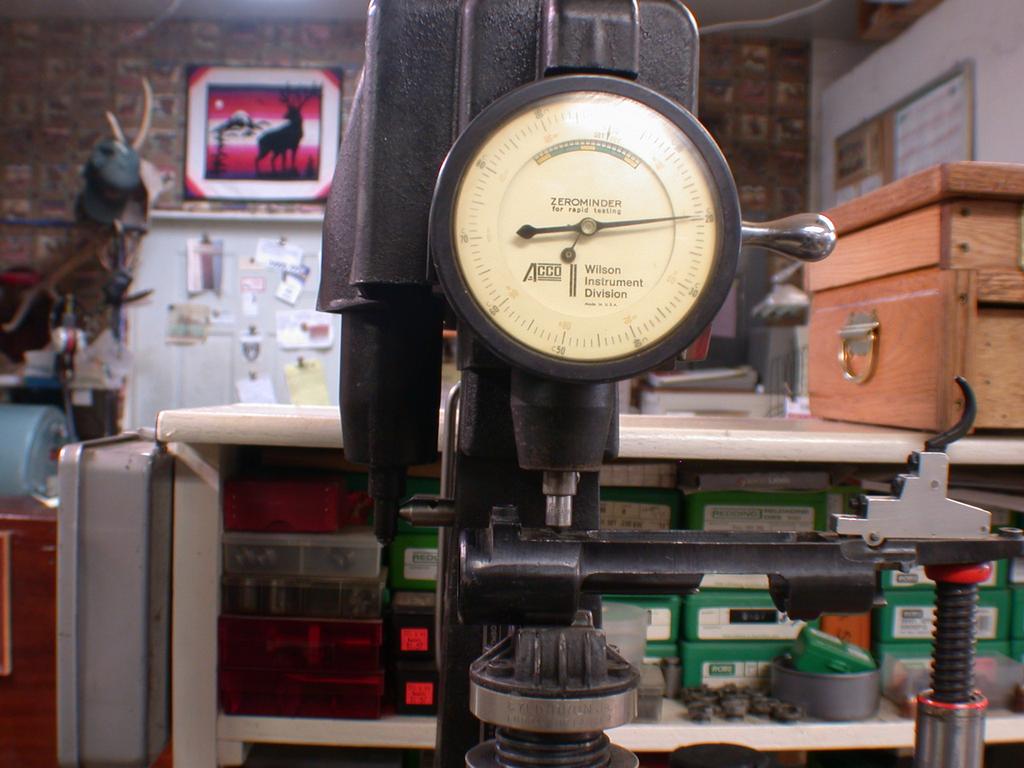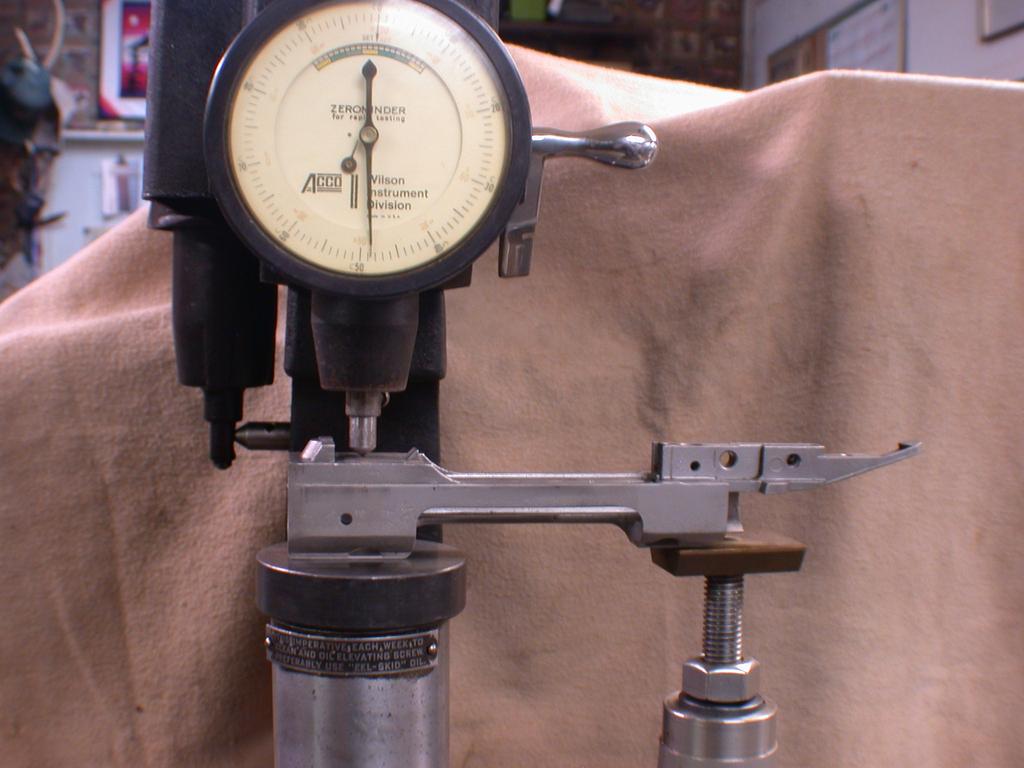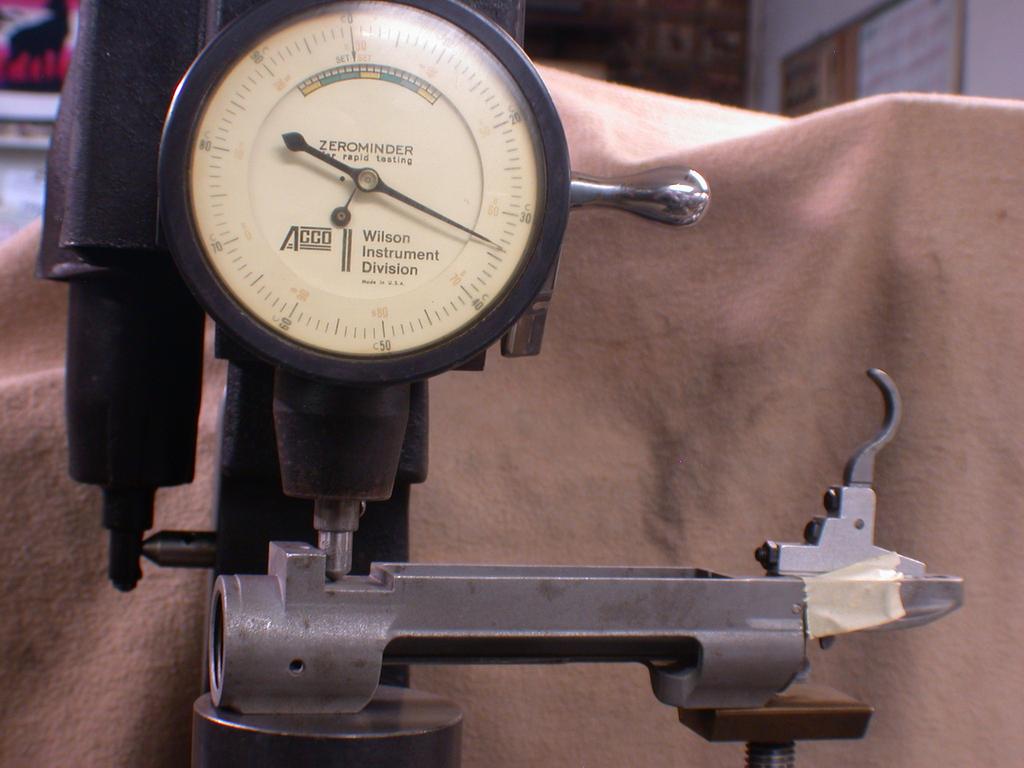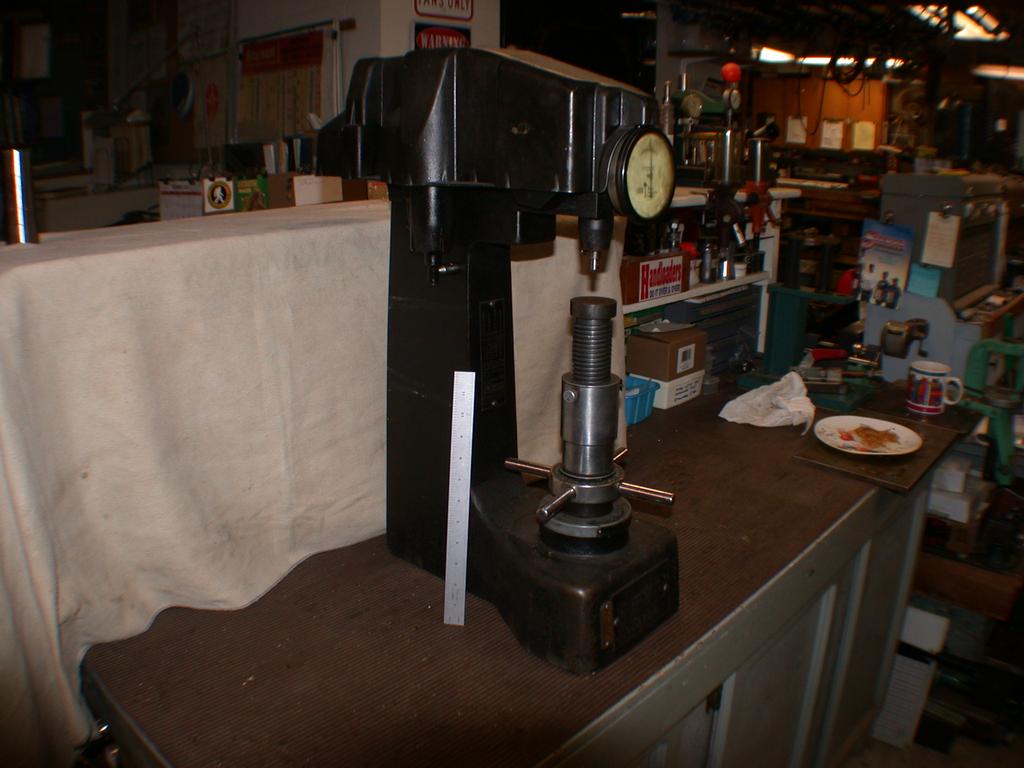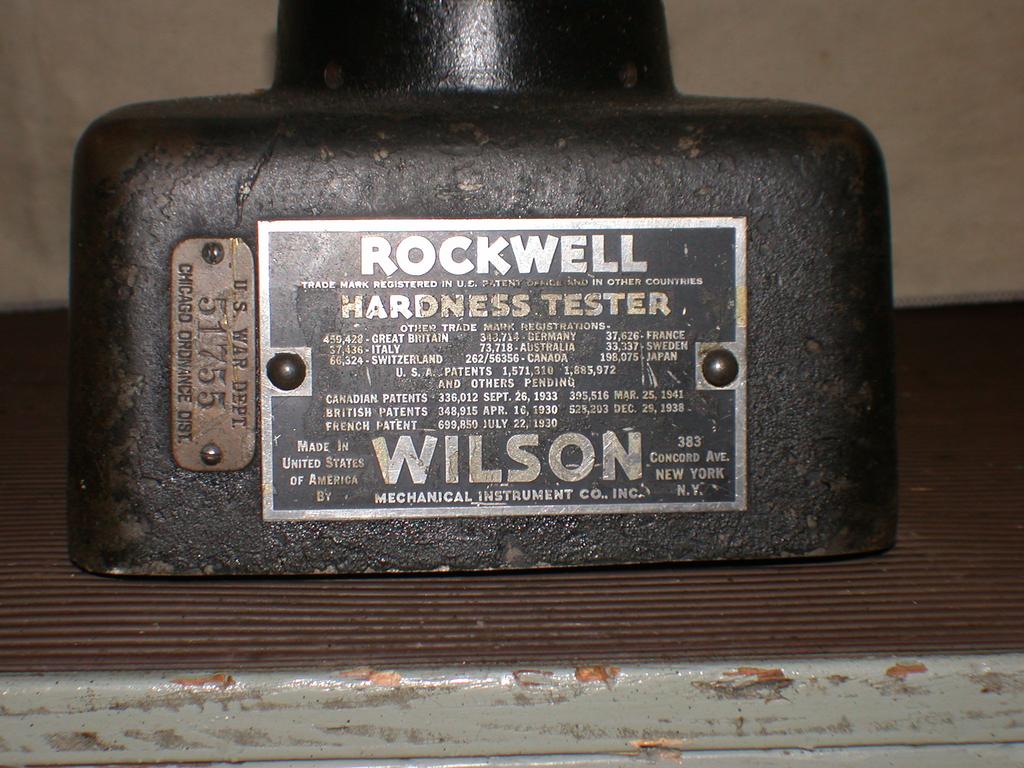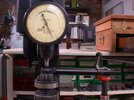Readings taken under the lower lucking lug, as Douglas Barrels used to do in the 1970's when they tested actions prior to installing barrels.
Columbian M98. 23 on the Rockwell C scale.
Santa Barbara 1951 Corona M98, 20 on the Rockwell C scale.
A very old Pre 64 Winchester action with the small wing safety. 38 on the Rockwell C scale.
Post 64 Winchester Classic. 47 on the Rockwell C scale.
Ruger M77 Tang safety. 49 on the Rockwell C scale.
Ahh the much cussed BBK action. This one is a late model, sold by Olympic Arms (The "Ultra Mag" action) and is properly heat treated. 34 on the Rockwell C scale.
Bolt from the post 64 Win M70. 44 on the Rockwell C scale.
The tester. It is a beast, weighs 200 pounds. Good old American made iron.
This one made in World War II. An everlasting design, they do not wear out.
I will test more this weekend. Several CZ Mark 10 actions, a couple of Whitworths, a Pre 64 Win from the 1950's, a Mexican Mauser. Several Enfields and whatever I can find in the shop.
Nope, do not have a Dumoulin.


